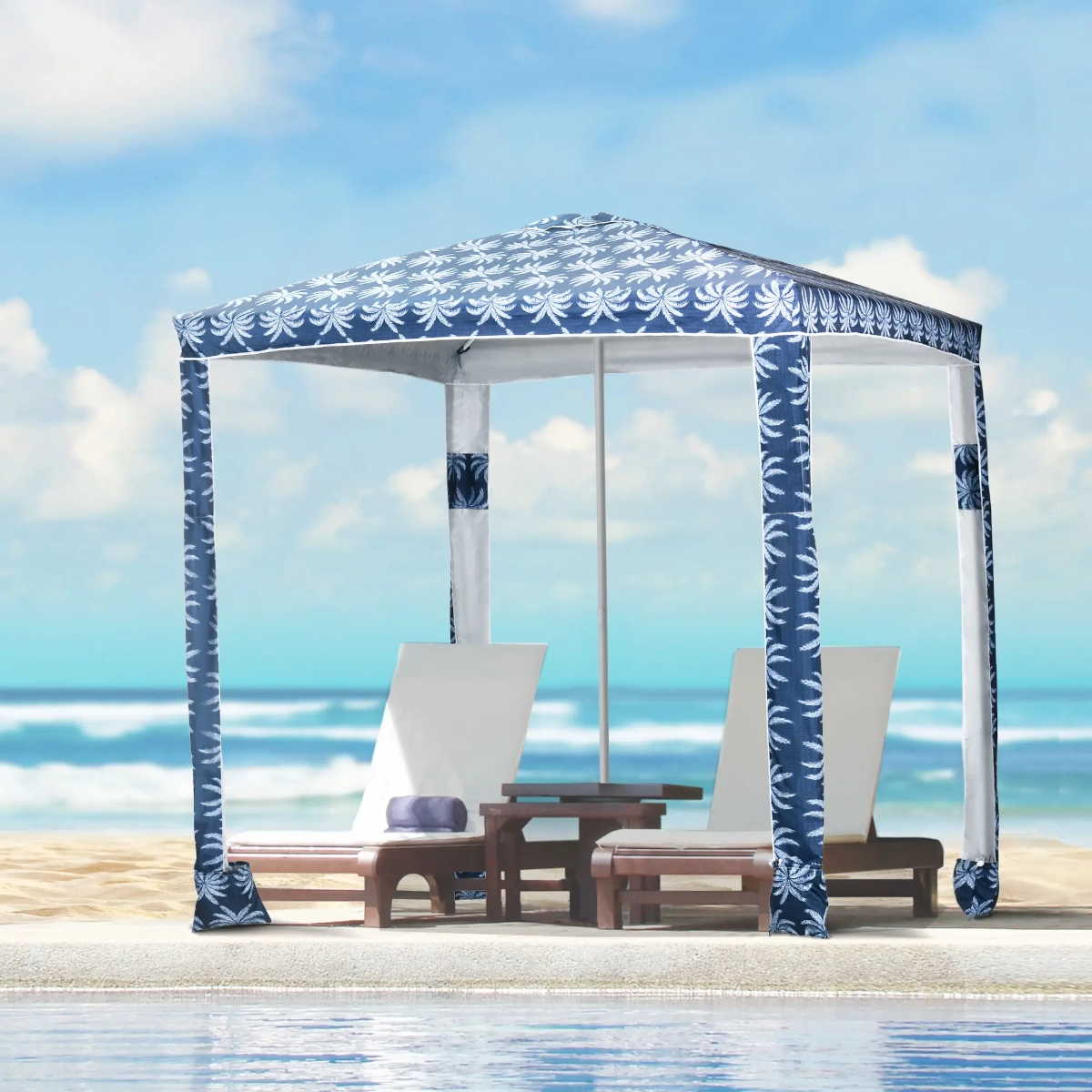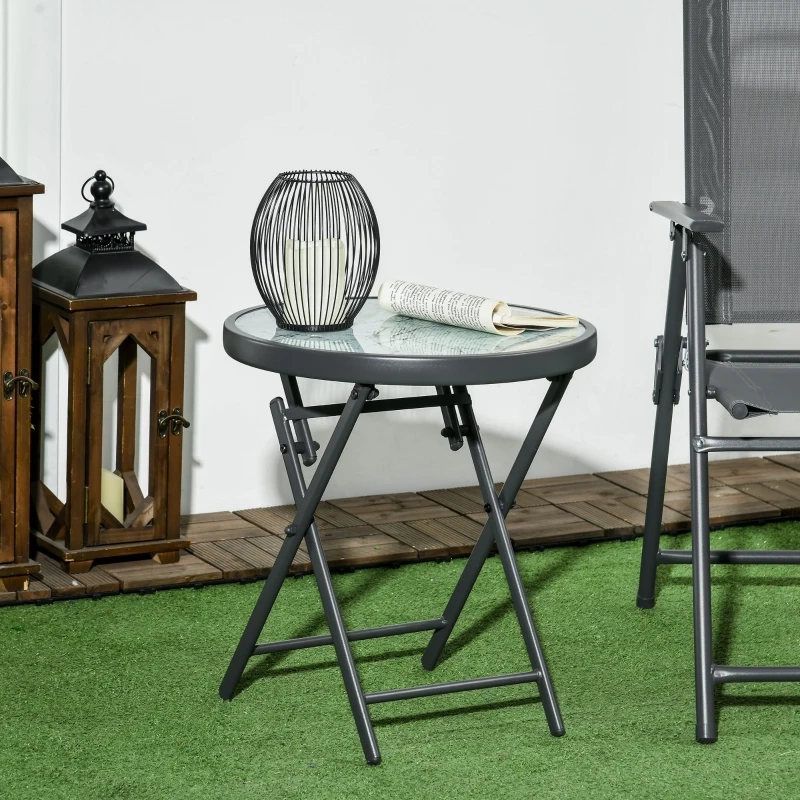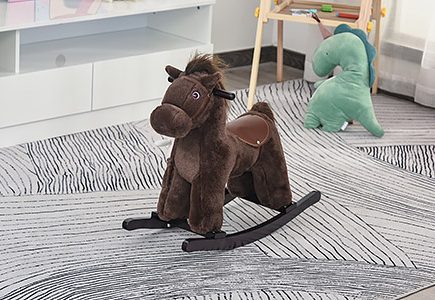A beach umbrella is essential for shade and protection from the sun. However, keeping it in place can be a challenge, especially when the wind picks up. Imagine setting up your beach umbrella, only to have it blown away by a gust of wind, or worse, causing an injury to someone nearby. Securing your beach umbrella properly is crucial for safety, comfort, and a stress-free beach day.
1. Choose the Right Beach Umbrella
The foundation for a stable beach umbrella setup starts with choosing the right umbrella. While any umbrella might seem good at first glance, choosing the right one for beach conditions is essential to its performance.
Factors to Consider:
- Size and Weight: Larger umbrellas may provide more shade but can be harder to secure in windy conditions. Smaller umbrellas are lighter and easier to manage but may not offer as much protection from the sun.
- Wind-Resistant Features: Look for an umbrella with wind vents to allow air to flow through and reduce pressure on the canopy. Some umbrellas also feature a telescoping pole, which offers adjustable height and flexibility.
Recommended Product:

The Outsunny 7.5ft 2-in-1 Beach & Sport Umbrella is an excellent choice due to its durable steel frame, wind vent, and adjustable height. It’s perfect for handling breezy beach days.
2. Understanding Beach Conditions

Before securing your umbrella, it’s essential to understand the beach conditions you’ll be facing. The wind speed, sand texture, and overall weather will affect how you anchor your umbrella.
Key Considerations:
- Wind Speed: Strong winds, typically above 15 mph, require more stable anchoring methods. Winds above 20 mph can be challenging, even for well-secured umbrellas.
- Sand Type: On soft or loose sand, anchoring can be more difficult. Firm, packed sand is easier to work with.
- Weather: Keep an eye on weather forecasts, especially if you’re expecting storms or strong gusts.
How This Affects Your Umbrella:
Understanding these conditions helps you select the right anchoring method, whether it’s a simple sand anchor or a more advanced auger-style anchor for loose sand.
3. Use a Sand Anchor or Screw Anchor
The sand anchor or screw anchor is one of the most effective and simple ways to secure your umbrella. This anchor is designed to screw deep into the sand, providing a solid, reliable grip.
Why It Works:
- Deeper Grip: Screw anchors twist into the sand, providing a stronger, deeper hold than pushing the pole into the sand.
- Easy Setup: These anchors are quick to install and don’t require additional equipment.
Recommended Product:

The Outsunny Beach Umbrella, 6.5′ Easy-Assembly Sun-Shade Shelter with Sandbags and Carry Bag comes with an integrated sand anchor, ensuring that it stays firmly in place even on windy days. The wind vent further enhances stability by allowing air to flow through.
4. Bury the Umbrella Pole Deep Into the Sand
Burying the umbrella pole deep into the sand is one of the most traditional and reliable methods for anchoring your umbrella.
How to Do It:
- Bury at Least 12 Inches: Aim to bury at least 12 inches of the umbrella pole in the sand. If the sand is loose or soft, bury it even deeper for added security.
- Firm Sand: Ensure the sand is packed tightly around the base for a firm hold.
Tip:You can combine this method with weighted bags or a sand anchor to provide even more stability.
5. Use Weighted Bags or Bases
Weighted bags or bases are an excellent alternative for securing your umbrella. They add extra weight to the base, which is essential for keeping the umbrella grounded, especially when the wind picks up.
Why Weighted Bags Work:
- Extra Stability: They provide an added layer of security, preventing your umbrella from tipping over.
- Portability: Weighted bags are easy to carry and can be quickly filled with sand when needed.
Recommended Product:

The Outsunny 6.7FT Tilt & Ruffled Beach Umbrella comes with a carry bag. This will help stabilize the umbrella and is a perfect solution for windy beach days.
6. Tilt the Umbrella for Wind Resistance
Tilting the umbrella can significantly reduce wind resistance and prevent it from blowing away. Most beach umbrellas have an adjustable tilt mechanism, which helps you position the canopy at an angle that better resists the wind.
How Tilting Helps:
- Wind Flow: Tilting allows air to pass through the umbrella more easily, reducing the pressure on the fabric.
- Better Shade: Adjusting the tilt lets you maintain optimal shade as the sun moves.
Recommended Product:

The Outsunny 6 FT Tilt & Adjustable Beach Umbrella features an adjustable tilt mechanism, which helps reduce wind resistance and offers customizable shade coverage.
7. Auger-Style Sand Anchors for Added Stability
If you’re on a beach with loose or soft sand, auger-style sand anchors are an excellent choice. These anchors screw deep into the sand, providing a more secure hold than traditional sand anchors.
Why Auger Anchors Work:
- Deeper Hold: Augers dig deeper into the sand, creating a firmer and more stable anchor for the umbrella.
- Wind Resistance: Augers can withstand higher winds by keeping the umbrella anchored firmly in the sand.
Recommended Product:

For optimal stability, the Outsunny 6.5FT UV50+ Sun Shade with Sandbags comes with an auger-style anchor, perfect for loose sand conditions. The combination of the anchor and sandbags makes it very stable.
8. Use Water Buckets for Extra Weight
If you don’t have a sand anchor, water-filled buckets can be a great way to add weight to the base of your umbrella. Simply fill the buckets with water from the ocean or nearby sources, and place them around the base.
Why Water Buckets Work:
- Heavy Weight: Water is dense, making it an ideal option for anchoring the umbrella.
- Convenient: Water is readily available at the beach, making it an easy and cost-effective solution.
Tip:
Use multiple water-filled buckets to distribute the weight evenly around the umbrella for better stability.
9. Bury the Umbrella Pole at an Angle
Burying the umbrella pole at an angle towards the wind direction can reduce wind resistance. This method is particularly effective when the wind is constantly blowing in one direction.
How to Do It:
- Angle the Pole: Bury the pole at a 15-20 degree angle toward the wind. This helps minimize the pressure applied to the umbrella.
- Firm Sand: Make sure the sand is packed tightly around the pole for stability.
Tip:
Always test the umbrella after burying it at an angle by giving it a gentle tug to ensure it’s firmly anchored.
10.Ensure the Pole is Straight

While burying the pole at an angle can help with wind resistance, keeping the pole straight ensures the umbrella’s weight is evenly distributed. A straight pole provides better stability overall and helps maintain consistent shade coverage.
Why Straight Poles Are Important:
- Even Distribution: A straight pole distributes the weight evenly, reducing the risk of tipping.
- Better Shade: A straight pole provides more even, reliable shade as the sun moves throughout the day.
Tip:
Before anchoring your umbrella, make sure the pole is aligned vertically for optimal stability.
Common Mistakes to Avoid

While setting up your beach umbrella, there are several common mistakes that many people make. Avoiding these pitfalls will help you keep your umbrella secure and prevent accidents.
1. Not Testing Stability
A lot of beachgoers skip testing the stability of their umbrella after setting it up. This is a crucial step that can prevent accidents. Always test your umbrella by gently tugging on the pole to ensure it’s securely anchored.
Why This Matters:
- Prevents Flying Umbrellas: If the umbrella isn’t stable, it could fly away, potentially injuring someone or damaging property.
- Peace of Mind: Testing stability ensures you can relax, knowing your umbrella is safe.
2. Using Weak Anchoring Tools
Using flimsy anchors or relying only on the umbrella pole to secure it can lead to instability. While some lighter umbrellas may work with simpler anchoring methods, stronger winds demand more durable solutions like auger-style anchors or weighted sandbags.
Tip:
Always invest in high-quality anchors and weights to keep your umbrella grounded. It’s a small price to pay for peace of mind.
3. Leaving the Umbrella Unattended
Leaving your umbrella open and unattended on the beach, especially when the wind picks up, can lead to disaster. Strong gusts can easily lift your umbrella and cause it to become a projectile.
Why This Is Dangerous:
- Risk of Injury: A flying umbrella can harm other people at the beach, especially children.
- Damage to the Umbrella: Strong winds can damage the fabric or frame if the umbrella is not secured properly.
Tip:
If you plan to leave your spot for a while, close and securely store the umbrella. It’s always better to be safe than sorry.
FAQs
Q1: What’s the most stable way to secure my beach umbrella?
For maximum stability, use a sand or auger-style anchor and twist it deep into the sand. Add weighted bags, such as sandbags or water buckets, for extra support. Choosing an umbrella with a vented canopy helps reduce wind resistance and prevents it from tipping over.
Q2: Can I leave my beach umbrella up overnight?
Leaving your umbrella up overnight is not advisable due to unexpected wind or weather changes. Even if secured, strong gusts can dislodge it, posing a risk to others. Always close and store your umbrella properly to prevent damage or accidents.
Q3: How can I adjust my umbrella to stay in the shade all day?
Use an umbrella with a tilt function to adjust the canopy as the sun moves throughout the day. Rotate the base slightly to follow the shifting angle of the sun. This ensures you remain shaded without needing to move your seating area.
Q4: Can I use regular umbrellas for the beach?
Regular umbrellas are not designed for beach conditions and lack the necessary stability. They can tip over easily in sand and are not built to withstand strong coastal winds. A beach-specific umbrella is designed with anchors and wind resistance for better durability.
Q5: How do I prevent my umbrella from tipping over on soft sand?
Use a screw or auger-style anchor, twisting it deep into the sand to create a strong hold. Adding extra weight, such as sandbags, water buckets, or even burying part of the pole, increases stability. Positioning the umbrella slightly tilted into the wind can also help reduce the chance of tipping.














